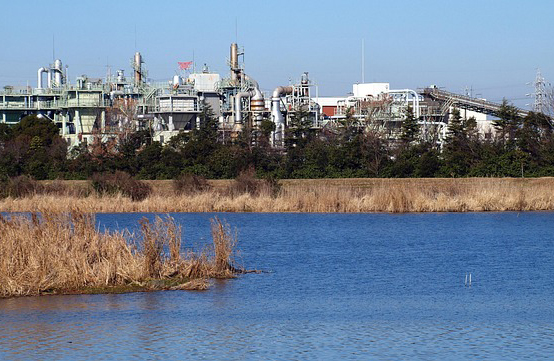
What is water reuse and why it matters in Europe
Europe’s relationship with water is getting a hard reset. For decades, treated wastewater vanished quietly — cleaned just enough to meet standards, then discharged into rivers and forgotten. But now, with climate and water scarcity tightening across the continent, water reuse in Europe has gone from a sustainability talking point to a survival strategy.
Analysts across the EU agree: by 2025 and beyond, Europe’s water security depends on squeezing more life out of every drop. There’s no such thing as “wastewater” anymore — only water we haven’t learned to use twice.
Water reuse means taking treated wastewater and giving it another life — for agriculture, cooling, industry, or even drinking in extreme cases. It’s about turning what used to be waste into insurance. With groundwater depletion worsening and rainfall growing erratic, reuse is becoming the backbone of Europe’s adaptation strategy.
When every liter counts, water reuse in 2025 is less about innovation than survival.
Why Europe is pushing for water reuse in 2025
How climate and water scarcity are forcing Europe to reinvent its water system
Europe has just lived through some of its driest summers on record. Between 2018 and 2023, rainfall fell by up to 20 percent across southern regions, and at one point in 2022, 60 percent of the continent sat under official drought alerts.
The Mediterranean, home to a quarter of the EU’s population, is now Europe’s climate front line — where extreme heat, rising evaporation, and collapsing rivers collide.
To fight back, the EU’s Water Reuse Regulation (EU 2020/741) came into force in 2023, setting legal standards for reusing treated wastewater for farming and industry. The regulation forces utilities and governments to stop treating treated water as “waste” — and start seeing it as a resource that can ease pressure on rivers and groundwater.
EU policy momentum: water reuse as the backbone of European resilience
In 2025, the European Commission’s new Water Resilience Initiative puts reuse at the heart of the continent’s water strategy. Funding through the EU Innovation Fund and Horizon Europe is flowing into projects like AquaSPICE, NextGen, and B-WaterSmart, which are testing circular water systems in cities, factories, and farms.
This isn’t a niche trend. It’s Europe’s version of water independence — and it’s moving fast.
How water reuse works in practice
From wastewater to new water: the science behind water reuse
Water reuse means taking treated wastewater and purifying it even further until it’s safe for another life — irrigation, cooling, or in some cases, even drinking. Advanced processes like membrane bioreactors, reverse osmosis, and UV disinfection strip away pathogens and pollutants, creating clean, reliable “new water.”
The beauty of reuse is flexibility. Cities can irrigate parks or street trees without touching freshwater reserves. Industries can recycle water inside closed loops. Farmers can keep crops alive without drilling deeper into collapsing aquifers.
The circular water economy: Europe’s shift from linear use to closed-loop systems
This shift isn’t just technological — it’s philosophical. Europe is rewriting its water story from linear (take, use, dispose) to circular (recover, clean, reuse). It’s the same logic driving the circular economy but applied to something far more fundamental than plastic or packaging.
What are the barriers to scaling up reuse
Public perception: overcoming the psychology of reused water
The biggest roadblock isn’t chemistry — it’s psychology. Many Europeans still bristle at the idea of “toilet to tap,” even though reused water for agriculture or industry is perfectly safe under EU standards. Public education, transparency, and visible examples are essential to normalize it.
Once people see the tech and the science, the “ick factor” tends to evaporate faster than the water itself.
Fragmented water regulation
Europe’s rules aren’t always synced. While EU law sets minimum standards, national laws vary wildly. Spain and Italy lead with mature reuse systems, while northern countries are still debating frameworks. That patchwork creates a silent bottleneck — innovation moves faster than regulation.
The cost and infrastructure gap between pioneers and laggards
Building advanced treatment plants isn’t cheap. Smaller towns often lack capital and expertise, leaving them behind while major cities and industries leap ahead. Coordinated EU funding, regional support, and public-private partnerships are critical to avoid a reuse divide between rich and poor municipalities.
Real-life water reuse examples across Europe
Spain: Europe’s quiet leader in large-scale water reuse
Spain is Europe’s quiet reuse powerhouse. Around 14 percent of its treated wastewater is reused — one of the highest rates in the world. In Valencia and Murcia, farmers irrigate tens of thousands of hectares with reclaimed water, cutting groundwater extraction and improving soil quality. (source)
The Netherlands closing the industrial water loop
Dutch industry has turned reuse into business sense. In Zeeland, the Dow Chemical plant recycles roughly 30 percent of its water through a partnership with local utilities, showing how cooperation can rewrite industrial norms. (source)
Portugal: merging AI with water reuse for precision irrigation
Portugal’s ÁGUA+ Project is combining artificial intelligence with reuse infrastructure to optimize irrigation schedules, cutting water use by up to 40 percent. It’s proof that smart tech and smart policy together can turn crisis into efficiency.
Water reuse is no longer an experiment — it’s Europe’s lifeline. As climate shocks intensify and freshwater supplies thin out, reusing treated wastewater is becoming the backbone of resilience for cities, industries, and agriculture alike.
Europe’s water story is shifting from extraction to regeneration. Every successful reuse project — from Spanish fields to Dutch factories — proves that resilience starts when we stop wasting what we already have.



